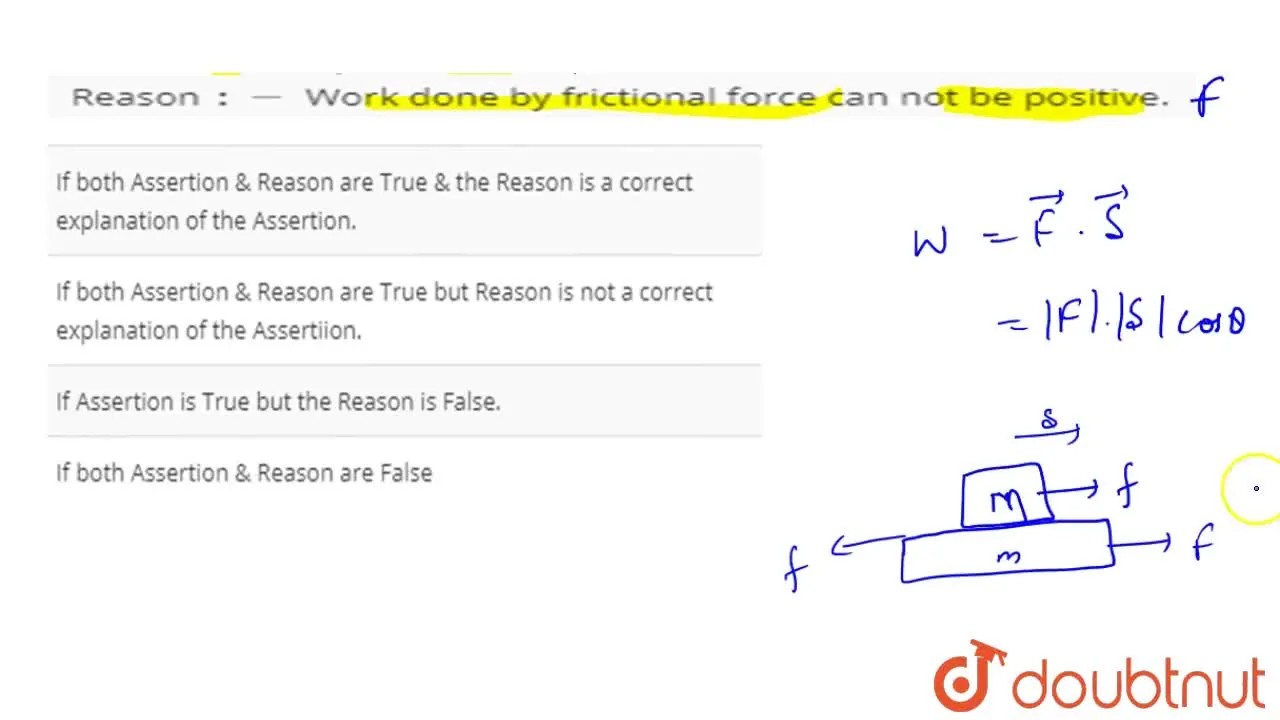Assertion :− Work done is positive when force acts in the direction of displacement.
Reason :− Work done by frictional force can not be positive.
If both Assertion & Reason are True & the Reason is a correct explanation of the Assertion.
If both Assertion & Reason are True but Reason is not a correct explanation of the Assertiion.
If Assertion is True but the Reason is False.
If both Assertion & Reason are False
The correct Answer is:C
Step by step video, text & image solution for Assertion :- Work done is positive when force acts in the direction of displacement. Reason :- Work done by frictional force can not be positive. by Physics experts to help you in doubts & scoring excellent marks in Class 12 exams.
Related Playlists
Similar Questions
Work done by a frictional force is
View SolutionHow is work done measured when, The force acts along the direction of motion of the body
View SolutionCan work done by a non - conservative force be positive ?
View SolutionWhen is work done by a force zero ?
View SolutionWork done by the force of friction
View SolutionAssertion : Work done by conservative forces is independent of path followed by the body .
Reason : Work done by non conservative forces depends on the path followed by the body .View SolutionWhen is work done by a force negative ?
View SolutionWhen is work done by a force positive ?
View SolutionAssertion :− Work done by frictional force may be sometimes path independent.
Reason:− Frictional force is a non−conservative force.View SolutionThis section contains Assertion and Reason type questions. Each question has 4 choices (1), (2), (3) and (4), out of which only one is correct.
Assertion (A) Work done by constant force is equal to magnitude of force multiplied by displacement
Reason (R) Work done is scalar quantity. It may be positive, negative or zero.View Solution


